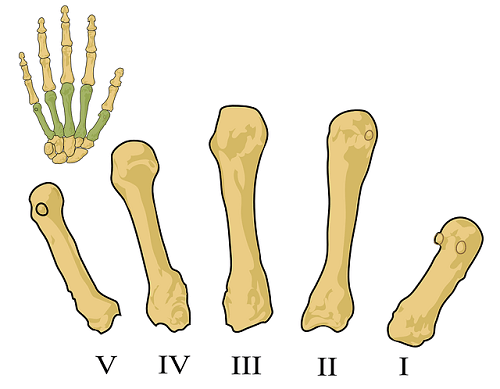 Many seniors suffer from chronic muscle pain, and most of them do not do much -- if anything -- about it. They just assume that the aches and pains they suffer from on a regular basis are an unavoidable part of the aging process. This simply is not the case, though.
Many seniors suffer from chronic muscle pain, and most of them do not do much -- if anything -- about it. They just assume that the aches and pains they suffer from on a regular basis are an unavoidable part of the aging process. This simply is not the case, though.
If you or a loved one is struggling with chronic muscle pain, it’s imperative that you take the time to identify the root cause. Listed below are four common causes of muscle pain among senior citizens, along with tips on how to relieve this pain and improve overall quality of life.
Polymyalgia Rheumatica
Polymyalgia rheumatica (also known as PMR) is a disease characterized by widespread inflammation. It most commonly affects people over the age of 50, with the average patient being around 70 years old. Polymyalgia often occurs alongside another disease known as giant cell arteritis. Common symptoms of polymyalgia rheumatica include:
- Muscle pain and muscle stiffness, specifically in the shoulders, upper arms, pelvic girdle, and thighs
- Stiffness is generally the worst first thing in the morning and can hinder one’s ability to get out of bed
- Fatigue
- Depression
- Weight loss
- Fever
- Muscle atrophy when left untreated
Many people with PMR also experience inflammation of the bursae and synovial cavities in their shoulders. Women are twice as likely as men to experience polymyalgia rheumatica. This condition is usually diagnosed with a blood test or through an ultrasound or MRI. Corticosteroid drugs (such as prednisone) are the most common approach doctors take when it comes to treating PMR. Physical therapy is also often recommended, as are diet and lifestyle changes.
Repetitive Strain Injuries
Repetitive strain injuries (also known as RSIs) affect nearly one-fourth of older adults and can be caused by any kind of repetitive motion -- knitting, playing sports like golf or tennis, typing on the computer, frequently reaching overhead, etc.
Repetitive strain injuries often cause painful muscle knots and cause general feelings of soreness and stiffness in the affected limbs. Any limb can be affected by an RSI, but seniors often experience pain most often in the wrists, forearms, fingers, thumb, shoulders, and elbows. In addition to pain, other common symptoms of RSIs include:
- Swelling
- Weakness
- Tingling or numbness
- Muscle cramps
- Throbbing
When RSIs first appear, discomfort is generally only felt when performing a specific task. But, over time, the pain may become more constant. Taking a break from the activity that is causing pain is the first step to treating an RSI. It can also be beneficial to work with a physical therapist to correct muscle weakness or imbalances that are contributing to one’s pain.
Fibromyalgia
Fibromyalgia is a type of chronic pain that is characterized by muscle pain that is felt throughout the body. Researchers aren’t sure exactly what causes fibromyalgia, but they believe the condition affects the way the brain processes pain signals and amplifies sensations of pain. Fibromyalgia sometimes develops after a significant stressor or physical trauma, but symptoms can also appear gradually with no apparent cause. Common symptoms of fibromyalgia include:
- Muscle pain
- Fatigue
- Sleep issues
- Poor memory
- Cognitive issues or brain fog
- Depression and/or mood swings
Many people who suffer from fibromyalgia also suffer from other chronic conditions like irritable bowel syndrome, migraines, or temporomandibular joint issues. Doctors sometimes prescribe muscle relaxers, anti-depressants, and anti-seizure medications to combat fibromyalgia. Many patients also utilize natural pain relief treatments, such as massage and acupuncture.
Medications
Many medications also can cause muscle pain. The following are two of the most common medications that seniors take that could be affecting their pain:
Cholesterol-Lowering Drugs
Cholesterol-lowering drugs, known as statins, have been shown to cause muscle pain and weakness in many people. In fact, many people who think they have fibromyalgia or another pain-causing disorder are actually just experiencing one of the many effects of their cholesterol-lowering drugs.
Opioids
Opioids like hydrocodone and morphine are often prescribed to treat severe pain. The problem, though, is that, when they’re used for an extended period of time, these drugs can cause a condition known as opioid-induced hyperalgesia. This condition occurs when a patient becomes dependent on opioids and has to keep taking more and more of the drug to relieve their pain. Opioids essentially turn off the body’s natural pain-relieving system. This means, when a person goes without the drugs for too long, they start to experience pain and have no way to relieve it other than to take more opioids.
Conclusion
If you’re suffering from chronic muscle pain, it’s important to know that this is not normal. There are lots of things you can do to relieve your pain and improve your quality of life, starting with identifying the condition or practice that is contributing to your pain.


Comments